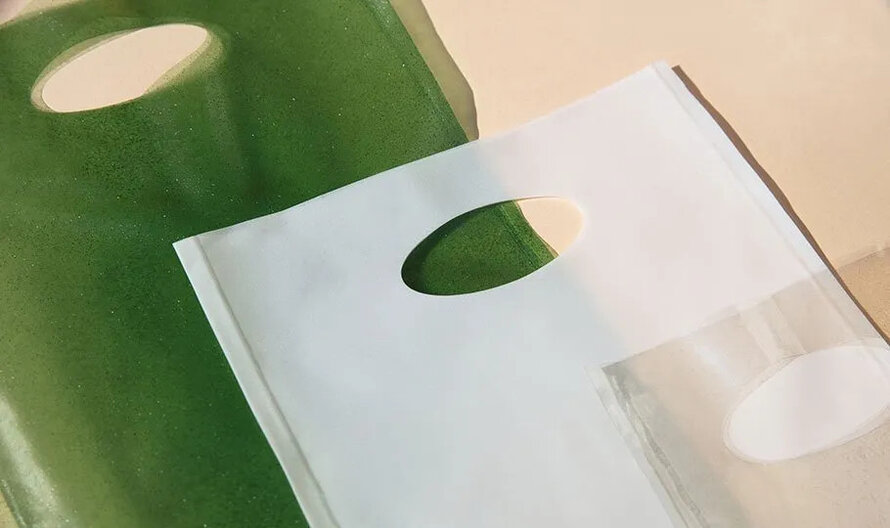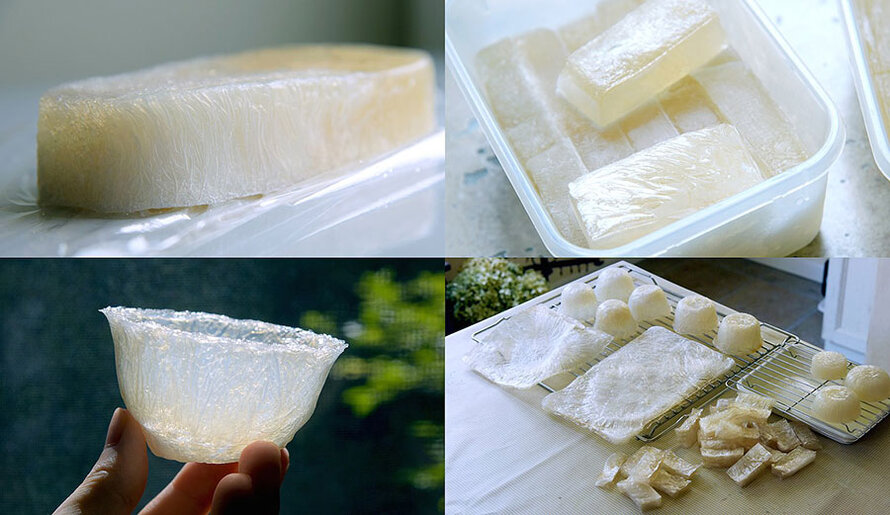Seaweed maintains ecosystem balance and contributes nearly half of the Earth's oxygen. In recent years, scientists and companies have tended to explore this ancient plant potential for creating sustainable plastic, being biodegradable to help reduce plastic pollution. Many studies show that seaweed-based plastics offer exceptional properties compared to other types of bioplastics. However, could seaweed plastic truly contribute to mitigating the worldwide challenge of plastic problems, and be the material of the future?
1. Why is seaweed plastic trending?
Seaweed is a type of marine algae that has been used for food, medicine, and other purposes for thousands of years. Besides, seaweed was studied and developed to produce bioplastic. Learn the reason why seaweed plastic has been used widely recently:
- Available source of raw materials: Seaweed plastic is produced from abundant marine resources that grow quickly, are easy to find, and process.
- Renewable: Contrasted with plastic materials made from fossil fuel, seaweed-based bioplastics made from seaweed can be renewable, thereby minimizing resource depletion, and supporting a lower carbon in manufacturing.
- Biodegradable: Seaweed plastics naturally break down in the surroundings, avoiding the persistence of harmful microplastics, hence, preventing long-term pollution and supporting the ecosystem environment.
- Emission reduction: Manufacturing seaweed bioplastics demands minimal energy inputs leading to lower greenhouse gas emissions. Seaweed also possesses the capability to absorb carbon dioxide, thereby reducing its environmental impact.
- Versatility in applications: Seaweed plastics can be moldable into various shapes and forms flexible for packaging, disposable products, textiles, and other uses. This promotes numerous industry applications while encouraging eco-friendly practices.
- Toxicity-free: Bioplastics derived from seaweed that do not contain toxic substances such as phthalates and BPA offer safer, healthier, and more environmentally friendly options.
- Improving marine ecosystems: Seaweed farming for bioplastic manufacture is a natural filter that can fill contaminants and make water clean, minimizing eutrophication and harmful algal blooms. Moreover, it provides habitat and prevents shoreline erosion, enhancing marine biodiversity.
Read more: What are bioplastic compounds? Outstanding benefits and applications
2. How seaweed plastic is created

The process of production of seaweed plastic
To produce seaweed bioplastics, we extract and process seaweed hydrocolloids into films in many stages. Here is a detailed process to create seaweed plastic:
- Hydrocolloid extraction: Seaweed hydrocolloids are extracted by washing, milling, drying, alkali and acid treatments, neutralization with formaldehyde, hot water, filtration, and precipitation.
- Powder preparation and mixing: The extracted hydrocolloids are dried and milled into a fine powder. Seaweed powder is combined with water, sugars, and starches derived from plants such as coconut and wheat. Plant-based dyes may also be included.
- Heating: The mixture is heated to dissolve the ingredients, resulting in a uniform solution.
- Casting: The heated solution is poured into thin films that are cool and solidified into a flexible, plastic-like material.
- Testing and optimization: Testing the films for strength, stretchability, water resistance, and other properties to make sure they meet industry standards. Moreover, the final product is tested for its ability to biodegrade, ensuring it can break down in composting environments.
3. Could seaweed plastic be the material of future?

Whether seaweed plastic will be the material of the sustainable future?
Nowadays, humans are increasingly dependent on materials derived from petroleum and fossil fuels. The main problem is that these materials are non-biodegradable. Plastic waste poses a significant threat to oceans and marine life. Every minute, the equivalent of a truckload of plastic enters the ocean, polluting even the most remote beaches and creating massive plastic patches in major oceans worldwide.
Amidst those pressing and concerning issues, seaweed bioplastic is referred to as a promising alternative because it is an available source of raw materials, renewable, biodegradable, and toxicity-free. It has a big potential to replace petroleum or fuel-derived materials.
However, most of the methods to produce seaweed bioplastic are not viable to be used to make bioplastics. This is because they have a low yield, cost and time consuming, and are more complex compared to petroleum or fuel-based plastics. The cost is high due to the amount of water used, production method, etc. It also has many barriers to scalability and mass production.
With ongoing research and technological advancements, seaweed could potentially revolutionize global efforts to reduce plastic pollution. Whether seaweed becomes the ultimate solution to our plastic crisis remains to be seen and researched more, but its promising attributes offer hope for a more sustainable future.
Read more: 5 Bioplastics That Suitable For Packaging Needs
4. Conclusion
In conclusion, seaweed bioplastics hold enormous potential. They provide a sustainable alternative to petroleum or fuel-based plastics, bringing an outlook in the future in which humans can reduce non-renewable resources. Even though challenges like production costs and scalability, ongoing research, and technological advancements offer hope for overcoming these obstacles.
5. About EuroPlas
At EuroPlas, we're more than just a TOP filler masterbatch manufacturer. We are concerned with global issues such as non-renewable and non-biodegradable materials and always stay updated on the latest trends in the plastics industry. That is the reason why we have provided worldwide market bioplastic compounds and bio filler for many years.
With outstanding advantages, these products are a suitable choice for producing environmentally friendly products such as biodegradable packaging, injection molding, and single-use plastic extrusion products.
Contact us for more information or support about our products. We are always ready to help you choose the right plastic materials for your needs.